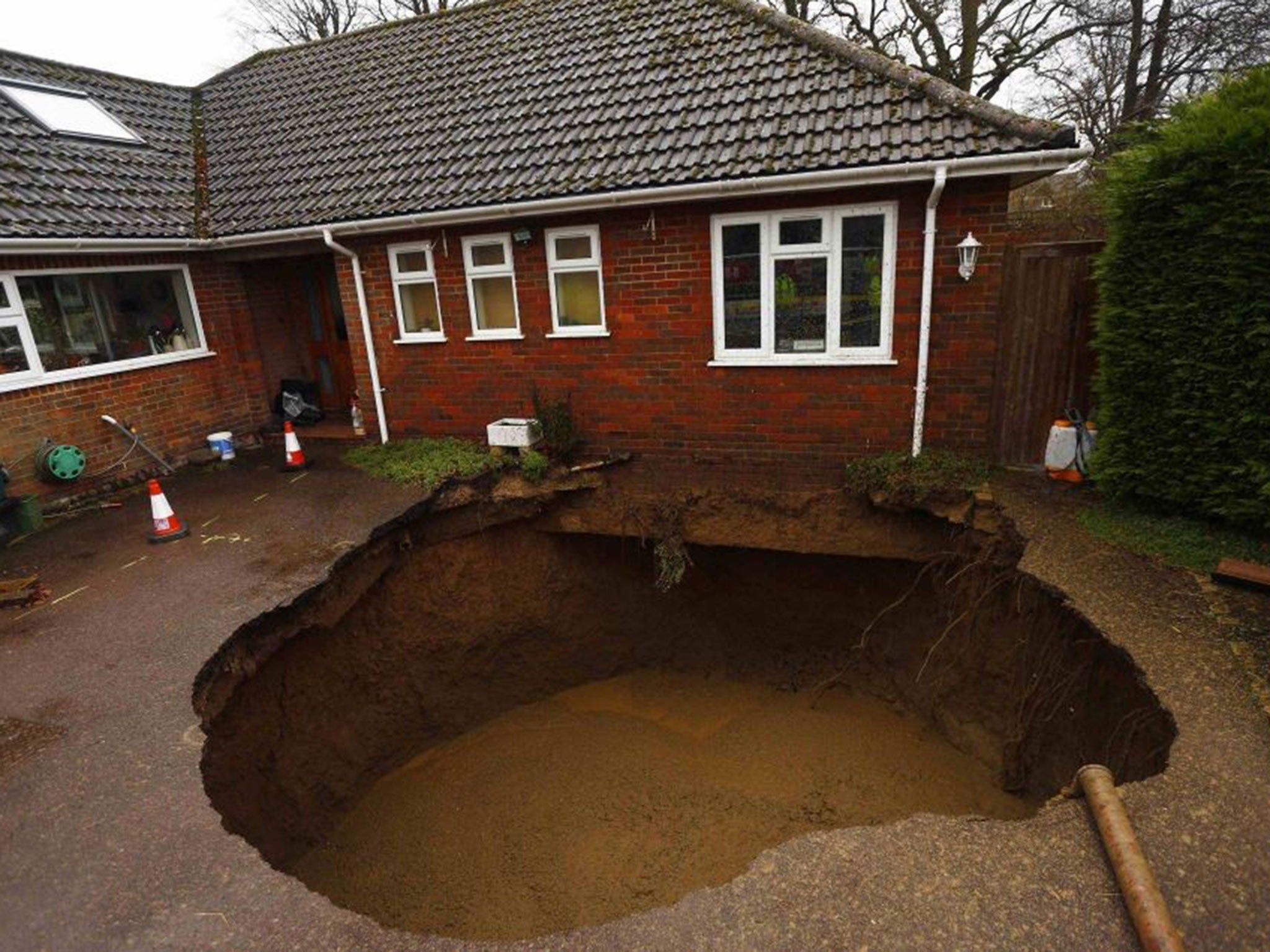More sinkholes will open up across Britain as the effects of flooding continue, warns British Geological Survey

A spate of sinkholes have opened up across the country as floodwater dissolves the underlying rock, while a “second wave” is likely to appear in the coming weeks as the rain stops and the ground begins to dry, the British Geological Survey warned yesterday.
The number of sinkholes reported has soared to six so far this month – many times more than the one to two that is typical across the whole of a normal year, experts said.
These have generally occurred as soluble rocks such as chalk, limestone and gypsum have been eroded by a sudden infusion of water from the heavy rainstorms which has made existing underground cavities bigger and causing the ground above it to collapse.
A house collapsed in Ripon this week when a sinkhole appeared following the erosion of the underlying gypsum. This followed a particularly large 20ft deep sinkhole in a Hemel Hempstead garden on Saturday which forced the evacuation of about 20 homes.
“There has been a significant increase in sinkholes over the past few weeks and it’s reasonable to suggest that this is related to the increase in rainfall,” said Dr Vanessa Bank, of the British Geological Survey.
“How long this goes on for very much depends on the weather. But there is likely to be more rainfall and my personal opinion is that we are talking about weeks,” she added.
Dr Anthony Cooper, also of the British Geological Survey, said that as the rainfall declined and the land started to dry out a “ second wave” of sinkholes was likely. This is because, as the hole beneath the ground drains out, the covering materials become heavier - at the same time as the increased buoyancy from rising groundwater levels is taken away.
“How long the ‘second wave’ lasts depends on the local geology and how the water is stored, but it will be over the next few months,” Dr Cooper said.
The south east of England – from Norwich down to the coast is particularly susceptible to sinkholes because there is a lot of chalk, while parts of Yorkshire, such as Doncaster and Ripon are more susceptible. The South West, where the underlying rock is less soluble, is less at risk.
Sinkholes are naturally occurring cavities – or holes in the ground – created by the erosion and drainage of water and can be just a few feet across or large enough to swallow whole buildings.
When a hole develops above a manmade cavity, for example where mining has taken place and hasn’t been properly filled, it is known as a dene hole – although these cases are typically lumped in with sink holes. Two of this month’s sinkholes are related to former mines.
Other sinkholes to have opened up this month include a 30ft deep one in a driveway in Walter’s Ash, near High Wycombe, Buckinghamshire, and swallowed up a Volkswagon Lupon.
Last week, a 10-mile stretch of the M2 in Kent had to be closed after a 15ft sinkhole opened up in the central reservation near Sittingbourne.
Although there has been a spate of sinkholes appearing this month, the most famous one appeared in Norwich back in 1988. As the driver of a Number 26 double-decker bus attempted to pull away on the Earlham Road just outside the city centre, a large section of the road surface collapsed beneath the rear wheels following the collapse of the 11th century chalk mine beneath. The passengers managed to scramble out before the vehicle slipped further into the pit and the event hit the headlines around the world.
However, even this sinkhole pales in comparison to some of the sinkholes seen in the US. In 2010, one of the most devastating sinkholes in recent times hit Guatemala City. An area approximately 65ft wide and 100ft deep collapsed, swallowing a three-storey factory and killing 15 people. The sinkhole was caused by a number of factors including an influx of water from Tropical Storm Agatha and leakage from a local sewerage pipe.
Read more:
Subscribe to Independent Premium to bookmark this article
Want to bookmark your favourite articles and stories to read or reference later? Start your Independent Premium subscription today.

Join our commenting forum
Join thought-provoking conversations, follow other Independent readers and see their replies